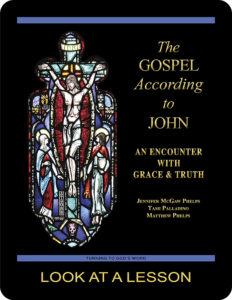serve & heal
 In the first chapter of the Gospel According to Mark (NABRE), Jesus’ ministry is accompanied by healing many who are ill. While in a few special cases we’re given insight into the logistics and the “how” of these signs and miracles, in far more cases such as this, they’re treated as almost incidental, Very little information is provided about how it is that Jesus actually heals anyone.
In the first chapter of the Gospel According to Mark (NABRE), Jesus’ ministry is accompanied by healing many who are ill. While in a few special cases we’re given insight into the logistics and the “how” of these signs and miracles, in far more cases such as this, they’re treated as almost incidental, Very little information is provided about how it is that Jesus actually heals anyone.
The Greek word used to describe these actions, θεραπεύω (therapeuo), is the root of the English word therapy and has a range of possible meanings from routine service such as that rendered by a handmaid to general unskilled medical service. It even can reference some sort of service or worship toward the gods. The key and interesting point in this context is the generally unskilled nature of this service.
It’s clear there was no good bucket or existing context into which to place Jesus’ miraculous healing acts. They’re not medical in nature, so terminology describing medical treatments isn’t applicable. While what Jesus is doing certainly isn’t unskilled, it also doesn’t seem to match the practice of any skilled craft. Jesus’ healing acts require no tools and seem to take very little time or effort. All four evangelists use this same word to describe Jesus’ healing or curing of the ill. He’s rendering a service that defies any existing categorization.
When in your life has Jesus intervened in a way that didn’t fit with your typical view of how things work?
you also may like our study of the Gospel According to John
 The Gospel According to John: An Encounter with Grace & Truth, a 25-lesson Catholic Bible study with an imprimatur, examines the Fourth Gospel’s view of Jesus Christ as the Son of God, with special emphasis on the institution of the sacraments of the Church as the means by which Christians are purified and made holy. This recently revised study includes maps and additional commentary, and takes a closer look at the way in which Jesus relates to individual men and women. Click on the book’s cover to view a sample lesson.
The Gospel According to John: An Encounter with Grace & Truth, a 25-lesson Catholic Bible study with an imprimatur, examines the Fourth Gospel’s view of Jesus Christ as the Son of God, with special emphasis on the institution of the sacraments of the Church as the means by which Christians are purified and made holy. This recently revised study includes maps and additional commentary, and takes a closer look at the way in which Jesus relates to individual men and women. Click on the book’s cover to view a sample lesson.
 Click on the picture of the statue of Moses with horns (above) to learn more about Lost in Translation. A new entry is archived each Monday. Contact us to receive Lost in Translation by email every week. You may use any of the contact links on our website to ask Matthew a question.
Click on the picture of the statue of Moses with horns (above) to learn more about Lost in Translation. A new entry is archived each Monday. Contact us to receive Lost in Translation by email every week. You may use any of the contact links on our website to ask Matthew a question.
